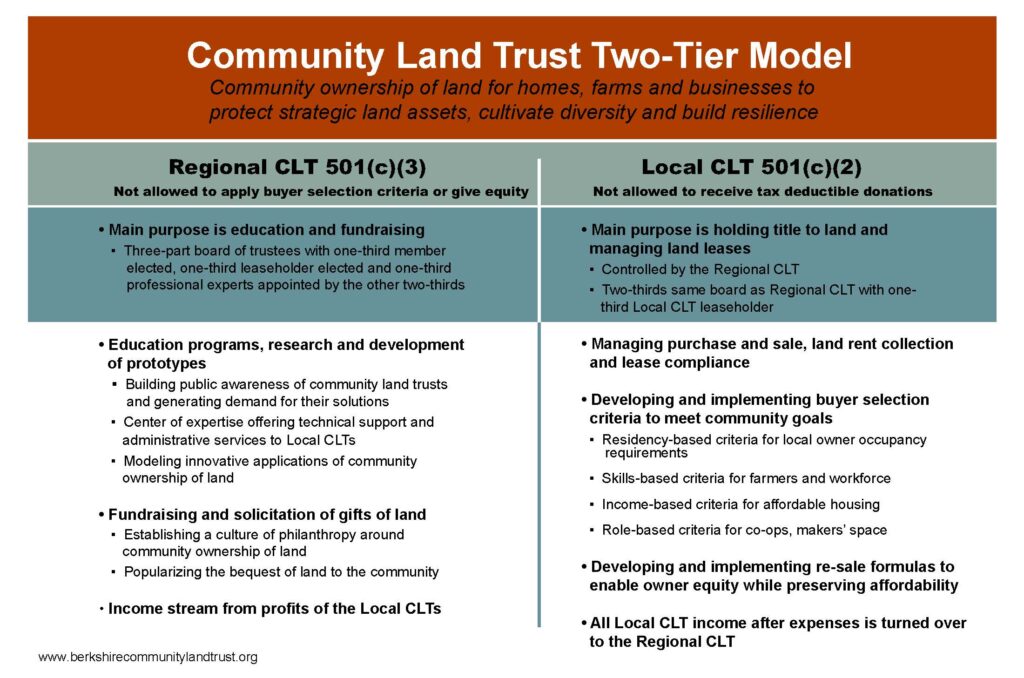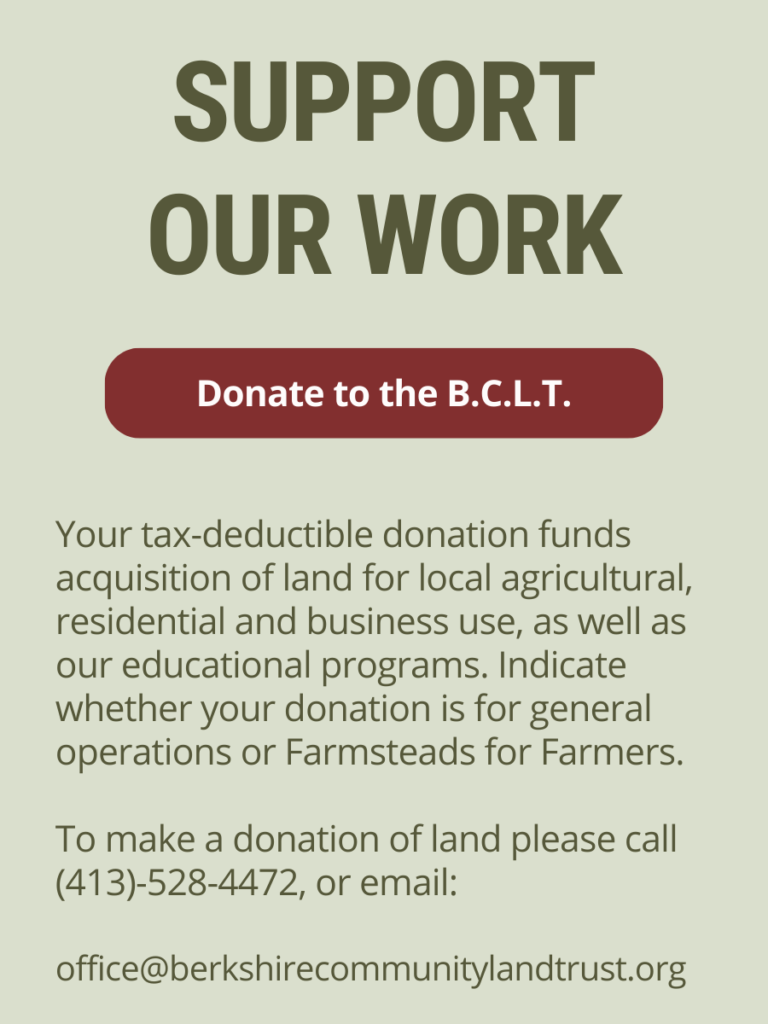Two-Tier CLT structure enables regional efficiency
and a diverse portfolio of land uses
The two-tier approach enables regional community land trusts to scale up operations and infrastructure with centralized services for local grassroots community land trusts. It supports centralized administrative services, technical assistance and financial controls, while maintaining an open, democratic organization and leaseholder participation. Because the two-tier structure is defined by the IRS, it has a standardized legal and financial framework that makes it easier to adopt and manage.
This IRS structure commonly enables education and religious institutions to maintain their status as a nonprofit charity while owning income generating assets, such as real estate. Only a 501(c)(3) charity may form a subsidiary 501(c)(2) asset holding company, and the (c)(2) must give all income after expenses to the (c)(3). The charity must control the holding company, and the holding company may not conduct business independently of the charity. More on these rules may be found on the IRS website.
Berkshire Community Land Trust articles of incorporation and bylaws lay out the community land trust framework for the two-tier model. Our approach is to scale up to serve our county with centralized services supporting new local community land trusts. Berkshire Community Land Trust has received its IRS determination letter as a 501(c)(3). In 2018 the Community Land Trust in the Southern Berkshires received IRS approval to become a 501(c)(2) title holding company on behalf of the Berkshire Community Land Trust.
The chart below explains the role and responsibilities of the tier-one regional 501(c)(3) CLT as distinct from the tier-two local 501(c)(2) CLT. The mission of the tier one 501(c)(3) CLT is education and fundraising for the acquisition of land. The mission of the tier two 501(c)(2) CLT is managing community-owned land. This model enables the charity to develop a culture of philanthropy around community-ownership of land, while also enabling the holding company to lease land for a wide variety of purposes that support community development.
Three activities we consider essential to the stewardship of local economies are not considered charitable by the IRS, and are enabled by the tier two asset holding company in this model:
1.) Developing and implementing buyer (occupant) selection criteria to meet community goals, such as residency-based criteria for local owner occupancy, or skills-based criteria for farmers and workforce, or role-based criteria for organizations and businesses
2.) Selecting occupants from low-, moderate- and middle-income groups to achieve economic integration
3.) Implementing re-sale formulas that enable owners of buildings and other improvements on the land to have equity
Below is a summary of the above chart content:
Summary of Berkshire Community Land Trust, a tier one regional CLT 501(c)(3):
• Main purpose is education and fundraising
– Three-part board of trustees with one-third member elected, one-third leaseholder elected and one-third professional experts appointed by the other two-thirds
• Education programs, research and development of prototypes
– Building public awareness of community land trusts and generating demand for their solutions
– Center of expertise offering technical support and administrative services to Local CLTs
– Modeling innovative applications of community ownership of land
• Fundraising and solicitation of gifts of land
– Establishing a culture of philanthropy around community ownership of land
– Popularizing the bequest of land to the community
– Income stream from profits of the Local CLTs
Summary of Community Land Trust in the Southern Berkshires, a tier two local CLT 501(c)(2):
• Main purpose is holding title to land and managing land leases
– Controlled by the Regional CLT
– Two-thirds same board as Regional CLT with one-third Local CLT leaseholders
• Managing purchase and sale, land rent collection and lease compliance
• Developing and implementing buyer selection criteria to meet community goals
– Residency-based criteria for local owner occupancy requirements
– Skills-based criteria for farmers and workforce
– Income-based criteria for affordable housing
– Role-based criteria for import-replacement businesses, co-ops, etc.
• Developing and implementing re-sale formulas to enable owner equity while preserving affordability
• All Local CLT income after expenses is turned over to the Regional CLT








